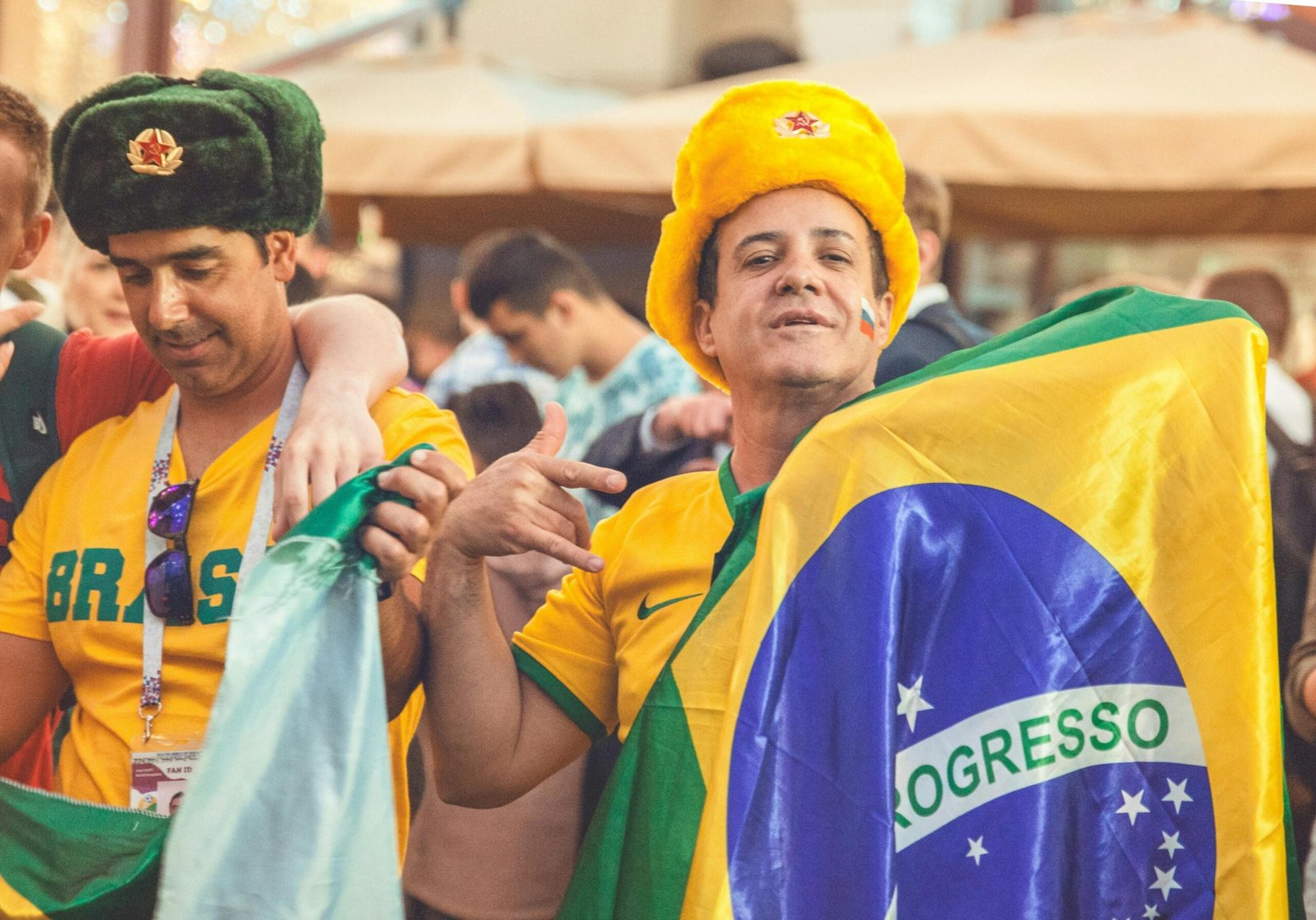Brazil, a vast and diverse country, is home to a rich cultural heritage and a vibrant population. Its flag, a symbol of national identity, reflects the country’s history, values, and aspirations. Let’s delve into the fascinating details of the Brazilian flag and explore the symbolism behind its design.
The Green Background: A Tribute to Nature
The vibrant green color that dominates the Brazilian flag is a tribute to the country’s lush forests and abundant natural resources. Brazil is renowned for its vast Amazon rainforest, the world’s largest tropical rainforest, which plays a crucial role in maintaining global biodiversity and regulating climate. The green color also symbolizes hope, growth, and prosperity.
The Yellow Diamond: A Representation of Gold
The prominent yellow diamond in the center of the flag represents Brazil’s vast gold reserves. Historically, the discovery of gold in Brazil played a significant role in attracting European colonization and shaping the country’s economic development. The yellow diamond also symbolizes wealth, abundance, and the sun, a source of life and energy.
The White Band: A Symbol of Peace
The white band that encircles the yellow diamond signifies peace and harmony. It is a reminder of Brazil’s commitment to peaceful coexistence and its efforts to promote international cooperation. The white color also symbolizes purity, innocence, and hope for a better future.
The Celestial Globe: A Tribute to Independence
The celestial globe, or “globo celeste,” is a blue sphere depicted in the center of the yellow diamond. The 27 stars that encircle it stand for the states of Brazil and the Federal District of Brazil. The celestial globe is a symbol of Brazil’s independence and its place in the global community. It also represents the country’s aspirations for progress and development.
The Motto: “Ordem e Progresso”
The motto “Ordem e Progresso,” which translates to “Order and Progress,” is inscribed on the white band above the celestial globe. This motto reflects Brazil’s commitment to building a society based on law, order, and social progress. It is a reminder of the country’s ongoing efforts to overcome challenges and achieve a better future for its citizens.
The Flag’s History and Evolution
The Brazilian flag has undergone several changes throughout its history. The original flag, adopted in 1822, was quite different from the current design. It featured a red field with a blue diamond containing a celestial globe and 15 stars representing the provinces of the empire. Over the years, the flag has been modified to reflect changes in the country’s political landscape and territorial divisions.
The Flag’s Significance in Brazilian Culture
The Brazilian flag holds a special place in the hearts of Brazilians. It is a symbol of national pride, unity, and identity. The flag is often displayed on public buildings, homes, and during national celebrations. It is also used to represent Brazil in international sporting events and diplomatic relations.
The Celestial Globe: A Starry Night Sky
The celestial globe depicted on the Brazilian flag is a fascinating element, representing the night sky as it appeared over Rio de Janeiro on November 15, 1889, the day the Brazilian Republic was proclaimed. The states and Federal District of Brazil are represented by the 27 stars on the globe. Each star is positioned in its exact celestial location at that specific moment in time, symbolizing the nation’s unity and its place in the cosmos.
The Southern Cross Constellation
Within the celestial globe, the Southern Cross constellation is prominently featured. This constellation holds significant cultural and historical importance for Brazil, representing the country’s southern hemisphere location. The Southern Cross has been used by sailors and explorers for centuries as a navigational guide, symbolizing direction and purpose.
The Flag’s Evolution Over Time
While the current Brazilian flag has been in use since 1968, it has undergone several changes throughout its history. The original flag adopted in 1822 was quite different, featuring a red field with a blue diamond containing a celestial globe and 15 stars representing the provinces of the empire. As Brazil expanded and new states were formed, the number of stars on the flag was adjusted to reflect the changing political landscape.
The Flag’s Use and Significance
The Brazilian flag is a powerful symbol of national pride and unity. It is commonly displayed on public buildings, homes, and during national celebrations. The flag is also used to represent Brazil in international sporting events and diplomatic relations. In addition to its official use, the Brazilian flag is often incorporated into various cultural expressions, such as art, music, and literature.
The Flag’s Role in Brazilian Society
The Brazilian flag plays a significant role in shaping Brazilian identity and fostering a sense of national belonging. It serves as a unifying symbol that transcends regional, ethnic, and socioeconomic differences.
Common Questions About the Brazilian Flag
What do the colors of the Brazilian flag represent?
The colors of the Brazilian flag are green, yellow, and white. Green represents nature and hope, yellow represents gold and abundance, and white represents peace and harmony.
What is the meaning of the motto “Ordem e Progresso”?
The motto “Ordem e Progresso” means “Order and Progress.” It reflects Brazil’s commitment to building a society based on law, order, and social progress.
How many stars are on the Brazilian flag?
There are 27 stars on the Brazilian flag, representing the 26 states and the Federal District.
What is the significance of the celestial globe on the flag?
The celestial globe represents Brazil’s independence and its place in the global community.
When was the current Brazilian flag adopted?
The current Brazilian flag was adopted in 1889, following the proclamation of the Brazilian Republic.
Conclusion
The Brazilian flag is a powerful symbol of national identity and unity. Its design reflects the country’s rich history, diverse culture, and aspirations for a better future. By understanding the symbolism behind the flag, we can gain a deeper appreciation for Brazil’s heritage and its place in the world.
To read more, click here.

Leave a Reply